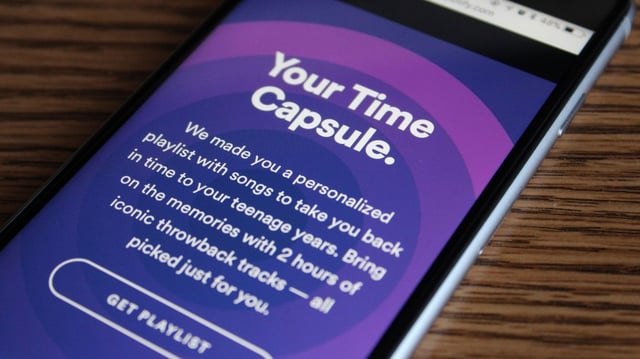These days, it feels like when you see the phrase “eCommerce marketing,” the word “personalization” is never far behind. As much as we may tire of hearing about it, we have to admit that personalization is as worthy of the hype as all the marketing masters say it is. It’s tied to creating a good customer experience since 80 percent of online shoppers say they’re more responsive to businesses that deliver a personalized experience. And, of course, when you give consumers what they want, you’re more likely to forge a positive brand image.
But let’s get back to the basics. What is personalized marketing, anyway? Essentially, it takes consumer demographics, buyer behaviors and past purchase history into account to deliver individualized messaging to a specific consumer or group of consumers. Digital marketing in and of itself is more personalized than old-school ads — before PPC and SEO, companies were forced to cast an extremely wide net, hoping that a few people might bite — but it seems to get more personalized every single day. The latest data show that consumers pay more attention to messaging that’s hyper-relevant to them.
With this in mind, we should all want to make our marketing strategies more personalized, especially now that we know it can equal big engagement and an even bigger return on investment. But putting that in place is a process — one that involves getting to know your consumer well. If you don’t know anything about your target audience, how can you possibly create messaging that feels tailored to them?
Here, we’ll cover all there is to know about making all your marketing channels more personalized, which can equal major growth for your business.
Why Personalization?
To further prove that a personalized marketing channel is worth your time and money, let’s take a dive into some statistics. We know that consumers are more likely to buy from stores that personalize the experience. The latest data from entrepreneur Neil Patel suggests that 56 percent of online shoppers are more likely to buy from a retailer that recognizes them by name, and 65 percent say they’re more likely to buy from a retailer that knows their purchase history.
Besides the general consumer preference for personalization, there’s also a lot of data showing that it can help you garner many more clicks across paid ads, email campaigns, social media and more. For example, personalized email messages can boost your click-through rates by an average of 39 percent. We all know that when we’re able to reach consumers in the highly competitive email space, we can count on big returns.
What’s more, well-done personalized marketing campaigns directly equate to a more positive brand affinity. The reason for this is really quite simple. Consumers feel they can trust companies that favor personalization over mass marketing — it’s as if they’re receiving a suggestion from a friend instead of a big retailer — and they’re happy to be less bombarded with emails, ads and messaging that simply doesn’t relate to them. There are still some instances where too much personalization can feel a bit unsettling, but there’s evidence to suggest that when it provides value, it’s typically well-received by consumers.
Some Great Examples of Personalized Marketing
Let’s take a quick look at some of the most creative examples of personalized marketing from brands that know a thing or two about building brand image and sales. One of the best examples of personalized marketing is Coca-Cola’s Share a Coke Campaign. Consumers who found bottles of Coke with their name on the label — could it get more personalized? — were much more likely to share their drink on social media.
Here are some more great examples. Note that many of these brands are doing an excellent job at creating shareable content that’s also personalized.
- Cracker Barrel — When the national restaurant chain Cracker Barrel did some solid research into the best target audience for its new lunch catering program, the results were clear. The restaurant needed to target the people who made most of the catering decisions, which, as they discovered, were office managers. They launched what they called a “micro-targeted” campaign using highly segmented Facebook, Pandora and banner ads specifically targeting office managers. Cracker Barrel execs say the campaign, titled Office Hero, worked like gangbusters — performing well across impressions, engagement and broader business goals.
- Spotify — Music streaming giant Spotify got a big moment last year with the success of its Time Capsule feature, which provides users with eerily accurate throwback playlists that take them back to their teenage years. But Spotify’s incredible, personalized playlist wouldn’t have gone far without the company’s impressive personalized email messaging. Their email campaigns consistently provide value to consumers with personalized song and playlist recommendations.

Image via Techcruch.com.
- Cadbury — European chocolatier Cadbury entered into the personalized video realm to set the stage for fellow businesses looking to make real, lasting connections with consumers. Users were asked to grant Cadbury access to their Facebook profiles so that it could match them with a Dairy Milk flavor based on their preferences. It then followed the lead of Facebook by offering its consumers unique, personalized videos — complete with their own photos. The strategy worked, garnering Cadbury a 65 percent click-through rate and a 33.6 percent conversion rate.
Paid Ads
There are clearly many unique ways to personalize via various marketing channels, and one of the best opportunities is through paid ads. Consumers are more likely to click on and engage with advertisements that are specifically targeted to them, so this is a channel you don’t want to skimp on. Here are a few great ways to personalize advertisements, so you’ll get more impressions and increased engagement.
- Go Dynamic — When planning your ad strategy, you’ll come across two different kinds of ads — static and dynamic. In a nutshell, static ads are those that don’t change, whereas dynamic ads adjust based on the specific consumer. Dynamic advertisements are those like Cracker Barrel’s Office Hero banner ads, which were targeted specifically to office managers. Leverage dynamic ads so that you’re always getting the right messaging to the right consumer.
- Use Web Retargeting — A great way to take your dynamic ad campaign a step further is through web retargeting. Here’s how it works. When a consumer looks at a specific item on your page but leaves (bounces) before making a purchase, you can put that specific item back in front of them through paid ads on other sites. Using Springbot’s AdRoll APIs and retargeting options, you can target consumers based on their browsing history. When coupled with social retargeting, our clients experience a 73 percent improvement in conversions.
- Segment, Segment, Segment — Make sure that you’re partnered with a data-driven eCommerce analytics platform so that you can collect valuable data that allows you to properly segment your target audience. You can create dynamic ads to target people by their age group, gender, household income and a number of other factors so that you’re always putting tailored ads in front of a specific audience.
- Use Social Advertising — Using Facebook retargeting campaigns is one of the best ways to get some serious bang for your retargeting buck. Unlike your typical display ads, Facebook ads encourage users to engage with your brand and other consumers. If they see an ad posted from a real Facebook account — probably your company’s account — and want more insight about the product before hitting that “checkout” button, they’re likely to find it on social.
Email Marketing
The second half of the personalization puzzle is email marketing. Like in the Spotify example above, emails have the power to provide two important things to consumers — value props and useful content. The more helpful, targeted and valuable your strategy, the more successful it will be. Here are some more great tips on how to personalize your email marketing campaigns.
- Target with Segmented Email — The idea behind segmented email marketing is relatively simple. Use your customer’s demographics to build personalized relationships with consumers. Email segmentation allows you to create customizable market groups. For example, you can (and should) send out a different campaign to a baby boomer than you would a millennial, and you should greet a new customer differently than you would a repeat customer. Segmented email tools make this possible.
- Employ Automated Trigger Emails — Many companies also use personalized trigger emails to welcome new consumers, to mark an anniversary or to win back customers who haven’t made a purchase or engaged in a certain amount of time. Trigger emails are sent to inspire the consumer into action. For example, eCommerce companies can use automated trigger emails to prompt consumers to make a purchase if they abandon cart or inspire a second purchase.
- Focus on Messaging — Savvy marketers may have heard a little buzz about de-personalizing email marketing. Contrary to how it sounds, this simply focuses on breaking an overly cliché personalization formula. Many personalized emails wind up using robotic, impersonal language. Ensuring that your content is totally authentic and sounds like it was written by a real person will help make that personalization feel a bit more real.
- Use a Real Name —The “from name” on your email marketing strategy — the name that shows who an email is from within a recipient’s inbox — is more important than you might think. Try using a person’s name instead of your company’s name; it can help make your emails campaigns feel more personalized like they’re actually from a real person.
- Use Your Recipient’s Name — Although it’s definitely personalization 101, it does bear mentioning that using your recipient’s first name in the subject line of your email can help it stand out in a sea of branded messages. This is especially important if you’re like many businesses and plan to send your emails during the time of day that they’re most likely to be clicked — in the morning or after 8 p.m., for many industries. Always make sure that your efforts have an eye-catching factor to entice recipients to click.
Conclusion: Personalization is Worth Every Penny
If you take one thing away from this guide, we hope it’s that your time and money will be well-spent on personalization efforts. The most important thing to do before you get started on a personalized ad overhaul is to integrate Springbot into your Magento or Shopify store so that you can gather valuable consumer information to guide your personalized campaigns. Naturally, you won’t get very far in your personalization journey if you don’t know much about your core consumer. We’re here to help with that!





